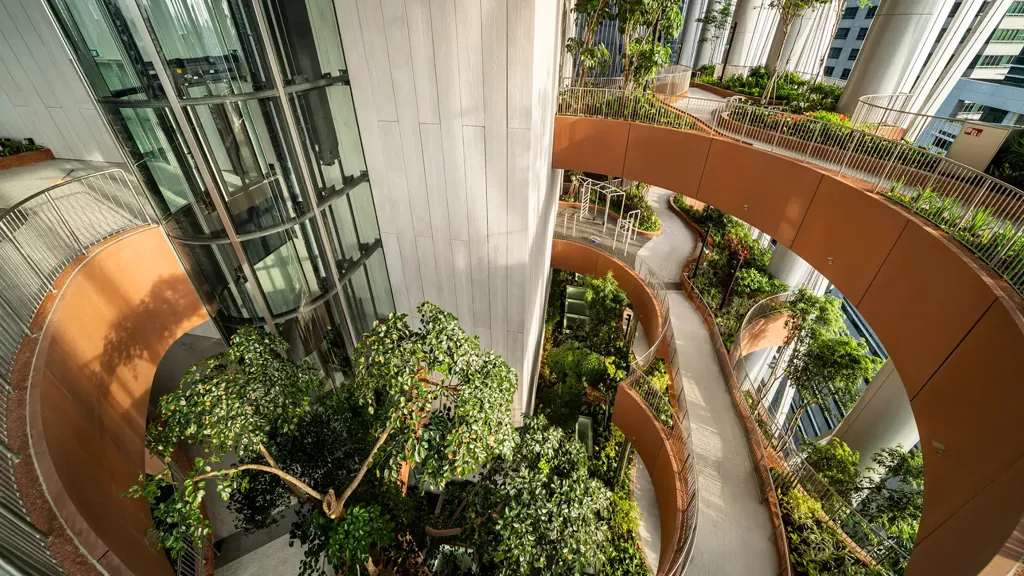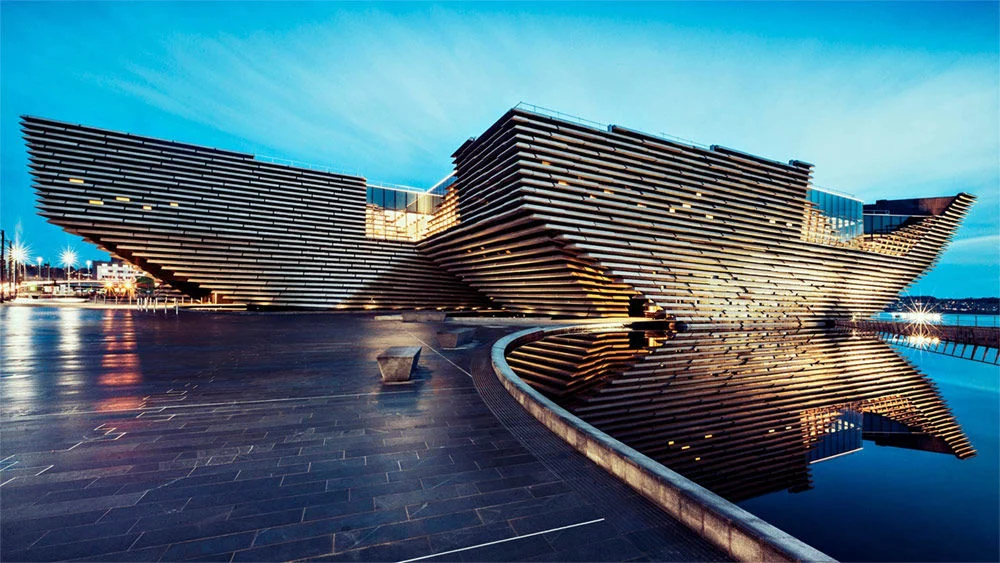Green building envelopes
As cities develop and expand, their green spaces are often the casualty. At the same time, as urban density increases so heat and pollution levels rise. Building envelope design needs to be responsive to these issues and effects.
To discuss a project, contact our team today:
Green building envelopes improve air quality and reduce pollution by filtering fine particles out of the air. They also minimise heat island effects and contribute to reduced noise levels.
Green building envelopes are achieved by considering a building’s position, its use, the proposed materials and client’s operational goals. We then explore ways a building’s external envelope can provide natural ventilation, with facades that reduce energy inputs while also contributing usefully to its active energy requirements. This design challenge provides opportunities to achieve new and innovative solutions.
A complete (and green) vision
We are also increasingly designing green building envelopes, to help clients operate buildings that can make a significant contribution to solving current problems relating to storm water management, particulate matter pollution and inner-city overheating.
Natural diversity
We offer a wide range of green building envelopes including moss walls, tree façades, and urban agriculture initiatives such as vertical farming, beehives and wildlife corridors, which all help to deliver better air quality.
Green roofs greatly improve water management, enabling storm water retention with timely release to public drainage systems and minimising the need to build expensive infrastructural storm water facilities.



Vertical Meadow
Vertical Meadow is an innovative and cost effective living wall system for temporary applications such as construction site scaffolding and hoardings. Plants and flowers can be grown from seed in-situ on a temporary mat that is easily fixed. Within two or three weeks the first shoots start to appear, eventually growing into a verdant vertical meadow transforming unsightly hoarding or scaffolding.
Exploring the potential
We collaborate with different disciplines to quantify the benefits of proposed green building envelopes, examining their potential to mitigate urban noise, air pollution and heat. This extensive research helps us measure impact including profitability of the solutions.
Natural energy
This is a question we’ve tried to answer through extensive research and real world application of our ideas. SolarLeaf is a bio-reactive cladding technology that uses algae and sunlight to harvest power within a building’s envelope.
As the world struggles to power itself without contributing to climate change, experiments like this could lead to the technologies we need.
The bioenergy façade
This research project is a further development of the SolarLeaf facade, the world’s first algae bioreactor facade, where microalgae are cultivated in glass elements that generate heat for the building operation and biomass for the food and pharmaceutical industries.
Façade technology continues to advance, with Arup at the forefront of its evolution. One major area of development is the conservation and generation of renewable energy from bio-reactive facades, as demonstrated by our SolarLeaf façade.
Unveiled as a pilot project at the International Building Exhibition (IBA) in Hamburg in 2013, the world´s first bio-reactive façade design generates renewable energy from algal biomass and solar thermal heat. The integrated system, suitable for new and existing buildings, was developed collaboratively by Strategic Science Consult of Germany (SSC), Colt International and Arup.
Explore
Discover more of our expertise:
Projects
Discover our latest work:

Realising the ‘Pearl of the Orient’
Kai Tak Stadium, Hong Kong

Transforming the travel experience at Zayed International Airport
Zayed International Airport Terminal A, United Arab Emirates

CapitaSpring uses biophilic design to keep people cool and healthy
CapitaSpring, Singapore

Preserving history at The Metropolitan Museum of Art through integrated engineering
The Metropolitan Museum of Art, European Paintings Skylights Project, United States of America
Building envelope and facade engineering
Arup has decades of experience designing building envelopes that set new standards.

